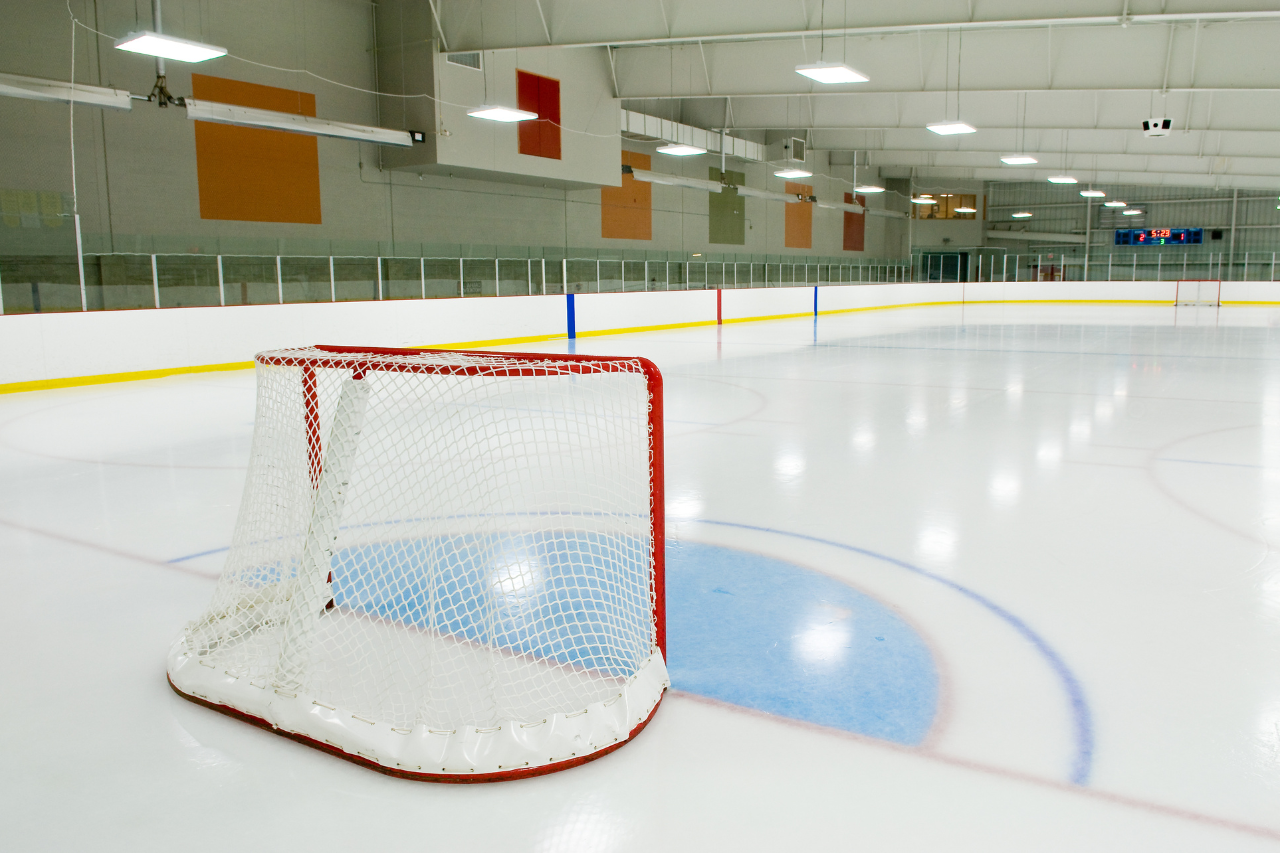Running an ice rink can be a rewarding venture, but like any business, it comes with its own set of financial challenges. Understanding and optimizing your ice rink profit margins is crucial for maintaining a successful operation.
While managing the day-to-day operations of an ice rink can be complex, honing in on key areas of improvement can make a significant difference in profitability. From diversifying revenue streams to optimizing operational efficiency, there are several actionable steps that can help boost your bottom line. By implementing these strategies, not only can you enhance customer satisfaction and engagement, but you can also create a sustainable business model that thrives in a competitive market.
To increase the profitability of your ice rink, a multi-faceted approach is necessary. Each strategy should be focused on leveraging diverse opportunities within the ice rink business while promoting customer satisfaction and long-term sustainability. By integrating these practices into your business model, you can create a more resilient and financially robust operation.
In this blog, we’ll explore strategies that ice rink owners and managers can use to enhance their profit margins and ensure the longevity of their businesses.
Assessing Operational Efficiency
Evaluating the operational efficiency of your ice rink is the first step toward boosting your profit margins. This involves analyzing all aspects of the business, from energy consumption and maintenance costs to staff productivity and scheduling. By identifying areas where resources are being underutilized or wasted, you can implement targeted strategies to streamline operations and reduce expenses.
Improving operational efficiency is crucial for maximizing profits and ensuring the long-term success of your ice rink. To enhance efficiency, consider implementing strategies such as optimizing energy usage, improving maintenance procedures, enhancing staff productivity through training, and creating efficient scheduling systems. These measures can help streamline operations, cut costs, and ultimately contribute to a more profitable and sustainable ice rink business model.
In this section, we’ll delve into practical methods for assessing operational efficiency and making data-driven decisions to optimize your ice rink’s performance.
Streamlining Day-to-Day Operations for Cost-Effectiveness
The first step in maximizing your ice rink’s profit margin is to scrutinize your daily operations. Look for redundant processes that can be eliminated or automated. Simple changes, such as optimizing staff schedules or upgrading to more efficient office management software, can save both time and money.
Implementing Energy-Efficient Practices for Reduced Utility Expenses
Ice rinks consume a significant amount of energy, primarily due to refrigeration and lighting. Implementing energy-efficient practices can lead to substantial cost savings. Consider installing LED lights and energy-efficient refrigeration systems. Additionally, regular maintenance of these systems can prevent costly repairs and inefficiencies.
Utilizing Technology to Enhance Operational Efficiency
From booking systems to automated maintenance alerts, technology can significantly streamline operations. Implementing modern registration and scheduling systems like EZFacility can simplify the booking process for skating sessions and events, reduce administrative workload, and improve the overall customer experience.
By adopting these strategies, your ice rink can achieve greater operational efficiency and cost-effectiveness. This ultimately enhances both profitability and customer satisfaction.
Revenue Diversification
In an industry as competitive as ice rink management, diversifying revenue streams is essential to ensure financial stability and growth. By exploring new avenues for income, ice rinks can not only mitigate risks associated with fluctuating demand but also tap into emerging opportunities that align with their operational strengths.
This section will explore various strategies to diversify revenue. Leading you to maximize your rink’s profitability while enhancing customer satisfaction and engagement.
Hosting Events
Diversifying your revenue streams is a key strategy for increasing your ice rink’s profitability. Hosting events such as ice hockey tournaments, figure skating competitions, and themed public skating nights can attract new customers and generate additional income. Consider offering packages that include skate rentals and concessions to maximize revenue per event. You can also partner with local businesses to sponsor events and increase exposure for both parties.
Catering Services
Another way to diversify your revenue is by offering catering services at your ice rink. This could include hosting private parties, corporate events, or even weddings on the ice. With a unique setting and fun activities like skating, your rink could become a sought-after venue for special occasions. Make sure to have a variety of food options available to cater to different preferences and dietary restrictions.
Advertising Opportunities
Utilize your ice rink’s prime location and high foot traffic to sell advertising space. Local businesses looking to reach a large audience can purchase banner ads around the rink or sponsor specific areas. Some area suggestions include concession stands, locker rooms, player benches, or scoreboards. This gives sponsors prime visibility to attendees throughout the facility. These sponsorships not only enhance brand exposure but also create a lasting impression on regular visitors and event attendees
Creating Partnerships
Forming partnerships with local schools, sports teams, and community organizations can provide a steady stream of visitors to your rink. Offer special rates or exclusive hours for these groups to encourage recurring business. Collaborating with local businesses for sponsorships and advertising can also provide additional revenue and community support.
By implementing these revenue diversification strategies, your ice rink can achieve sustained financial success and become a vibrant hub for community engagement.
Cost Management and Vendor Negotiations
Cost management is a crucial component of successful ice rink operations, as it directly impacts the facility’s financial health and sustainability. By effectively managing costs and negotiating favorable terms with vendors, rink operators can maximize their resources, reduce unnecessary expenses, and improve overall profitability. This section will delve into various strategies for controlling operating costs, optimizing vendor relationships, and maintaining a balance between quality and affordability.
Negotiating Favorable Terms with Suppliers and Vendors
Effective vendor negotiations can lead to significant cost savings. Establish long-term relationships with suppliers to negotiate bulk pricing or discounts. Always be on the lookout for alternative vendors who may offer better rates or superior products.
Additionally, be transparent about your budget constraints and be willing to negotiate for better terms or pricing. It’s also essential to review contracts regularly to ensure the terms remain favorable and adjust as necessary.
Implementing Cost-Cutting Measures without Compromising Quality
While cutting costs is essential, it’s important not to compromise the quality of your services. Focus on areas where you can reduce expenses without sacrificing the customer experience, such as office supplies, utility costs, and non-essential services. Implementing a lean approach to inventory management can also help minimize waste and reduce costs.
Technology can also play a crucial role in controlling operating costs. Consider investing in energy-efficient equipment or automating manual processes to reduce labor costs. Digital solutions can also streamline operations and improve efficiency, leading to cost savings in the long run.
Regularly Reviewing and Optimizing Procurement Processes
Regularly reviewing your procurement processes ensures that you’re getting the best value for your money. Conduct periodic audits of your expenses and compare them against industry benchmarks. This will help you identify areas for improvement and opportunities to renegotiate contracts or switch suppliers.
By continually assessing and refining these strategies, you can sustain financial health while providing an exceptional experience for your customers.
Remember, cost-cutting measures should not compromise the quality of your products or services. It’s crucial to strike a balance between reducing expenses and maintaining high standards to ensure long-term success for your business.
So, regularly review and optimize your procurement processes to ensure you’re getting the best value for your money while providing top-notch services to your customers.
Employee Training and Productivity
Employee training and productivity are essential components of a successful business operation. By investing in comprehensive training programs, employers can equip their staff with the necessary skills and knowledge to perform their roles efficiently and effectively. Enhanced productivity not only improves service quality but also contributes to a positive work environment and increased job satisfaction.
This section will explore various approaches to employee training, the benefits of ongoing professional development, and strategies for measuring and enhancing productivity levels within your organization.
Investing in Staff Training to Enhance Customer Service
Well-trained staff can make a significant difference in customer satisfaction and retention. Invest in regular training programs to ensure that your employees are knowledgeable, friendly, and efficient. Exceptional customer service can lead to repeat business and positive word-of-mouth, both of which are invaluable for your rink’s profitability.
Improving Employee Productivity for Optimal Resource Utilization
Encourage a culture of productivity by setting clear expectations and providing the necessary tools and resources for your employees to perform their tasks efficiently. Implement performance metrics and reward systems to motivate your staff and ensure they are contributing to the rink’s success.
Technology Integration for Efficiency
In today’s fast-paced business environment, the integration of technology has become a crucial factor in achieving operational efficiency. By adopting modern technological solutions, rinks can enhance various aspects of their operations, from booking and scheduling to maintenance and customer service.
This section will delve into the benefits of incorporating technology into your rink’s daily activities, including the use of automated systems, advanced analytics, and digital communication tools. Through effective technology integration, your rink can not only improve its overall efficiency but also provide a superior experience for both employees and customers.
Implementing Modern Registration Systems
Modern registration systems can streamline the booking process, reduce administrative workload, and enhance the customer experience. Platforms like EZFacility offer comprehensive solutions for managing registrations, scheduling, and customer data, allowing you to focus on other critical aspects of your business.
Utilizing Data Analytics for Informed Decision-Making
Data analytics can provide valuable insights into customer behavior, operational efficiency, and financial performance. Leverage data analytics tools to monitor key performance indicators (KPIs), identify trends, and make informed decisions that can boost your profit margins. Understanding patterns in skate rentals, popular skating sessions, and overall ice rink usage can help you optimize your offerings and pricing strategies.
Incorporating these technological advancements will not only drive operational improvements but also elevate the overall customer experience, positioning your rink for continued success in a competitive market.
Financial Monitoring and Reporting
Efficient financial monitoring and reporting are essential components of managing a successful ice rink. Keeping accurate and detailed financial records not only ensures compliance with regulatory requirements but also provides a clear picture of your rink’s financial health. By implementing robust financial monitoring systems, you can track income, expenses, and cash flow with precision, which is crucial for making strategic decisions.
This section will explore the importance of financial oversight and provide best practices for maintaining comprehensive financial reports that can aid in securing funding, managing budgets, and achieving long-term financial stability.
Establishing Regular Financial Monitoring Practices
Consistent financial monitoring is essential for maintaining a healthy profit margin. Establish regular practices for reviewing income statements, balance sheets, and cash flow statements. This will help you identify any financial issues early and take corrective action promptly.
Generating Comprehensive Financial Reports for Informed Decision-Making
Comprehensive financial reports provide a clear picture of your rink’s financial health and help you make informed decisions. Utilize accounting software to generate detailed reports on revenue, expenses, and profit margins. These reports can guide strategic planning and highlight areas where you can improve efficiency and profitability.
By maintaining diligent financial oversight and leveraging comprehensive reports, you can ensure the sustained success and profitability of your ice rink.
By adhering to these financial monitoring practices and generating detailed reports, you can confidently navigate the financial aspects of your ice rink, ensuring both its immediate and long-term success.
Conclusion
Boosting ice rink profit margins involves a combination of operational efficiency, revenue diversification, effective cost management, employee productivity, and technology integration. By assessing and optimizing each of these areas, you can create a more profitable and sustainable business.
Remember, small changes can lead to significant improvements over time. Start implementing these strategies today and watch your rink’s profitability soar.
Try EZFacility for free and experience firsthand how our comprehensive management software can boost your ice rink’s profitability through efficiency, revenue diversification, cost management, tech integration, and more.


